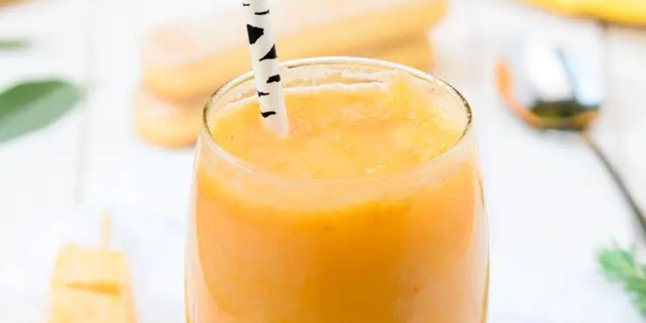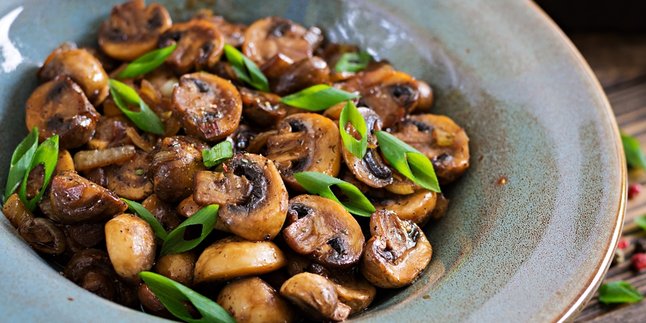Kapanlagi.com - In Javanese culture, kantil flowers are known not only for their fragrance but also for the spiritual meaning attached to them. Many people believe that eating kantil flowers according to Javanese primbon can have a certain influence on a person's fate and life. This belief is often associated with mystical knowledge, matchmaking, and authority. But is that really the case?
The belief about eating kantil flowers according to Javanese primbon has sparked various opinions in society. Some believe it to be an ancestral heritage rich in meaning, while others see it as mere myth. This article will help you delve deeper into the myths, traditions, and the actual facts.
1. Understanding Kantil Flower
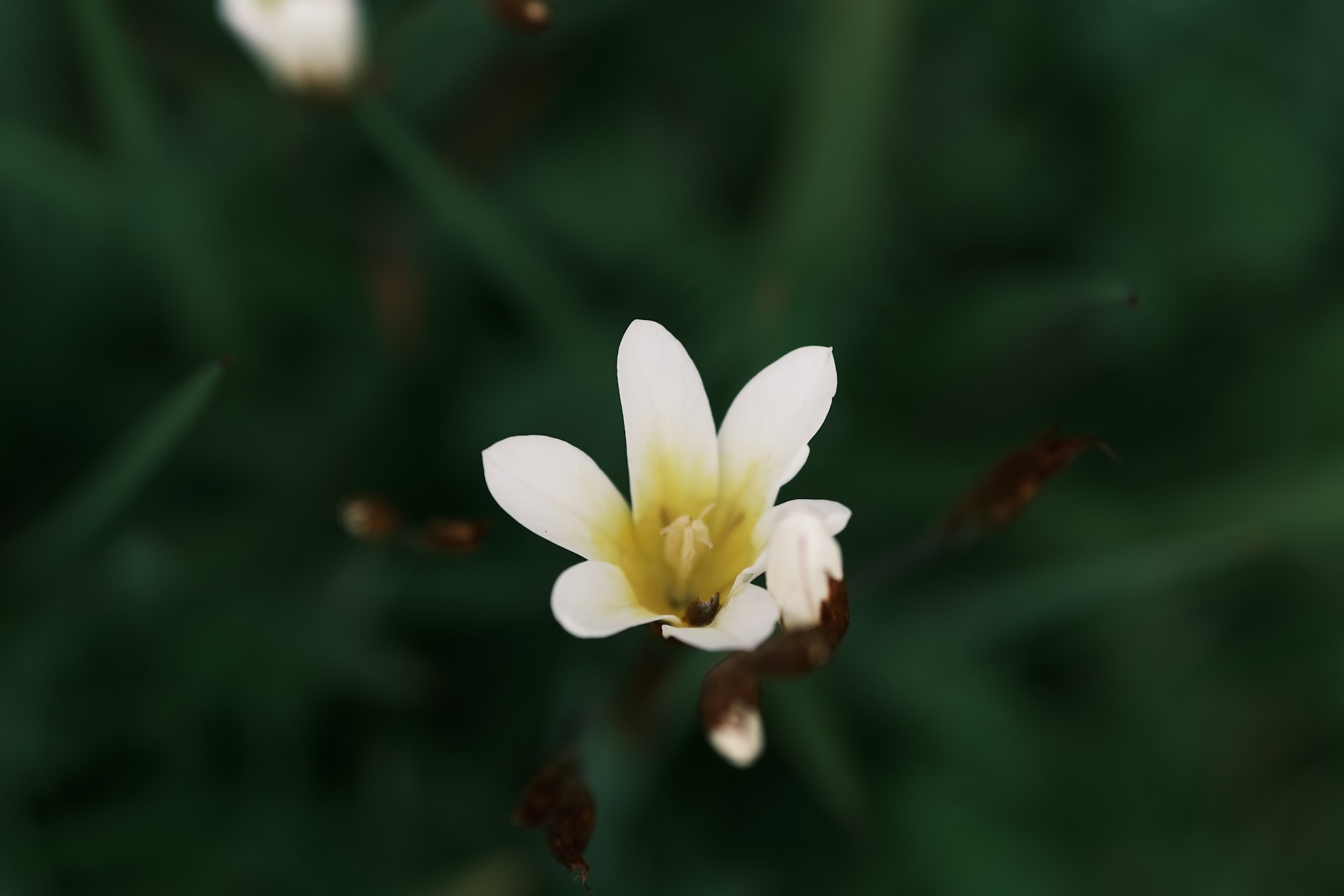
White flower (credit: pexels)
Kantil flower, also known as white champaca or Michelia alba, is a plant that holds significant meaning in Javanese culture. This flower is famous for its distinctive fragrance and beauty. In Javanese, the word "kantil" is derived from "kemantil-mantil" which means always remembered or bound.
The kantil flower has the following characteristics:
- Clean white color with a slight yellow tint in the center
- Strong and pleasant fragrant aroma
- Petals that consist of several layers
- Relatively large flower size, about 5-7 cm
- A plant that can grow into a large tree
In the context of Javanese culture, the kantil flower is often associated with spiritual and mystical matters. Many people believe that this flower has magical powers and can be used in various traditional rituals. The distinctive fragrance of the kantil flower is also often linked to the presence of supernatural beings or ancestral spirits.
In addition to its cultural value, the kantil flower is also known to have various health benefits. The extract of this flower has long been used in traditional medicine to address various complaints, ranging from digestive issues to skin care.
2. History and Origins of Kantil Flower
The kantil flower has a long history closely related to Javanese culture and traditions. This plant is believed to have originated from Southeast Asia, particularly Indonesia and Malaysia. The presence of the kantil flower on the island of Java has been recorded for centuries.
Some interesting facts about the history of the kantil flower:
- The kantil flower has been used in religious ceremonies and Javanese customs since the era of Hindu-Buddhist kingdoms
- During the Islamic Mataram Kingdom, the kantil flower was often used as a symbol of grandeur and nobility
- In ancient Javanese manuscripts, the kantil flower is frequently mentioned as one of the sacred plants
- The use of the kantil flower in rituals and traditional medicine has been passed down from generation to generation
The origin of the name "kantil" itself has several versions. One version states that this name comes from the word "kemantil-mantil" which means always remembered. This is associated with the distinctive and unforgettable aroma of the kantil flower. Another version suggests that the name "kantil" comes from the word "kanti" which means friend, referring to the belief that this flower can serve as a means of communication with ancestral spirits.
In its development, the kantil flower is not only known in Java but has also spread to various regions in the archipelago. In each area, this flower has different names and meanings, but it is still regarded as a special plant with spiritual power.
3. Myths Surrounding Kantil Flower in Javanese Primbon
In Javanese primbon, the kantil flower has various myths and beliefs that have developed over centuries. Some of the most famous myths include:
- Repellent of Calamity: The kantil flower is believed to have the power to repel negative energy and protect against disasters. Many Javanese people place kantil flowers in their homes or businesses as a form of spiritual protection.
- Summoner of Spirits: The distinctive aroma of the kantil flower is often associated with the presence of spirits, particularly kuntilanak. Some people believe that this flower can be used as a medium to communicate with the supernatural.
- Attractor of Fortune: In some versions of the primbon, the kantil flower is considered capable of attracting fortune and luck. Certain rituals involving the kantil flower are believed to enhance the chances of success in business or career.
- Detector of Virginity: A rather controversial myth states that the kantil flower can be used to detect a woman's virginity. It is said that if the kantil flower placed near a woman remains fresh and fragrant, it indicates that the woman is still a virgin.
- Provider of Youth: Some people believe that regularly consuming kantil flowers can keep a person youthful. This myth may stem from the antioxidant content found in kantil flowers.
It is important to remember that these myths are part of traditional beliefs and may not necessarily have a strong scientific basis. However, the existence of these myths shows how important the position of the kantil flower is in Javanese culture.
In a modern context, many Javanese people still respect the traditions and beliefs related to the kantil flower, even if they do not always interpret it literally. The kantil flower is still considered a symbol of beauty, purity, and local wisdom that deserves to be preserved.
4. Benefits of Kantil Flower for Health
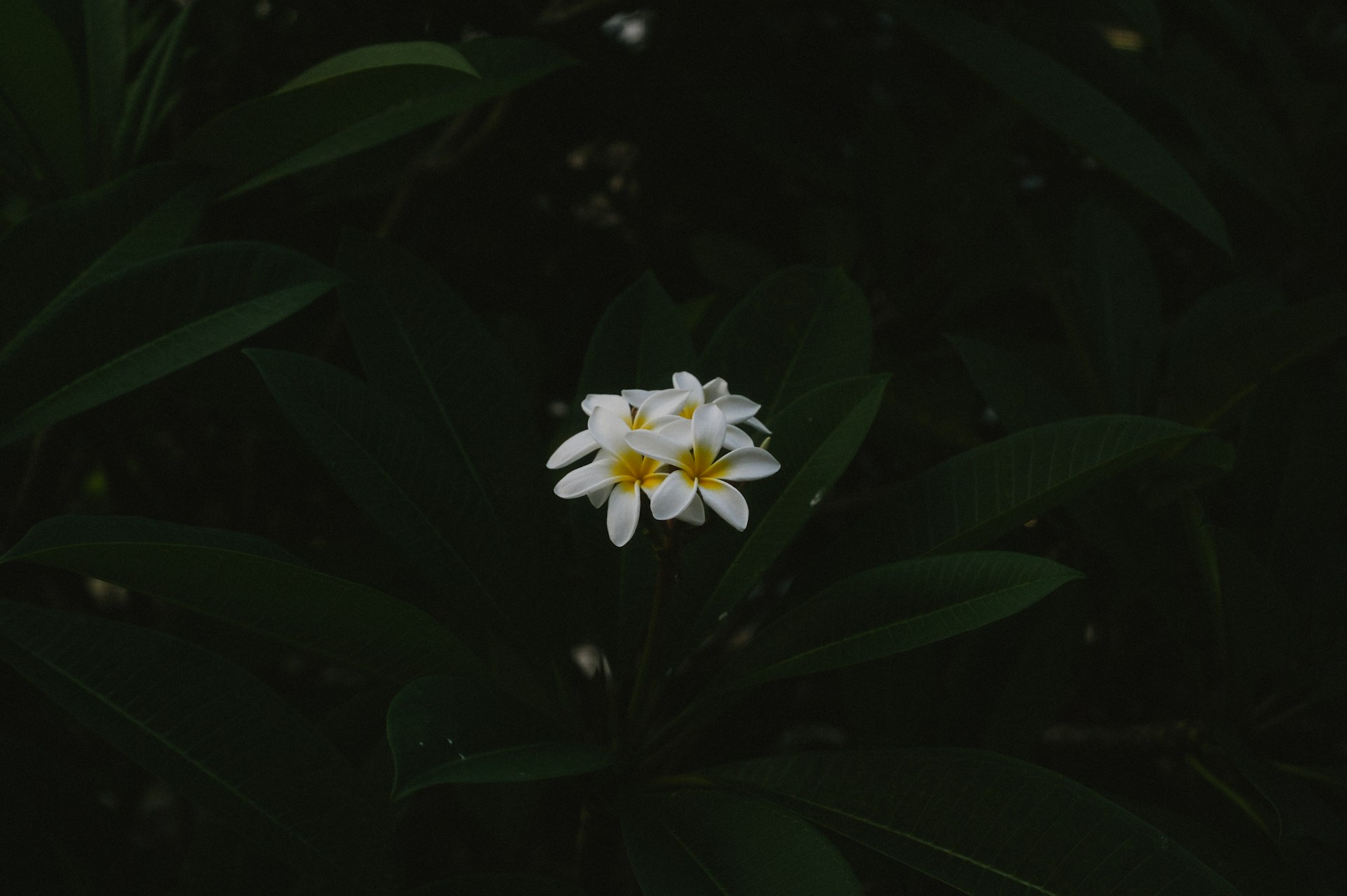
White flower (credit: pexels)
Although many myths surrounding the kantil flower have not been scientifically proven, this plant does have several health benefits that have been recognized. Here are some benefits of the kantil flower supported by scientific research:
- Natural Antioxidants: The kantil flower is rich in antioxidant compounds such as flavonoids and polyphenols. These antioxidants play an important role in protecting the body's cells from damage caused by free radicals, which can help prevent premature aging and various chronic diseases.
- Anti-inflammatory: Extracts of the kantil flower have been shown to have anti-inflammatory properties that can help reduce inflammation in the body. This is potentially beneficial for addressing various inflammatory conditions such as arthritis or skin problems.
- Relieves Anxiety: The calming aroma of the kantil flower is believed to have a relaxing effect that can help reduce stress and anxiety. Some studies suggest that aromatherapy with kantil essential oil can improve sleep quality and lower stress levels.
- Improves Oral Health: The active compounds in the kantil flower have antibacterial properties that can help maintain the health of teeth and gums. The use of kantil flower extract in oral care products has been shown to be effective in reducing dental plaque and preventing bad breath.
- Skin Care: The antioxidant and anti-inflammatory content in the kantil flower makes it a good ingredient for skin care. Extracts of this flower are often used in cosmetic products to help brighten the skin, reduce signs of aging, and improve skin texture.
It is important to note that most research on the health benefits of the kantil flower is still in the early stages and requires further studies to confirm its effectiveness and safety. Always consult with a healthcare professional before using kantil flowers or their derivatives for medicinal purposes.
5. Tradition of Eating Kantil Flower in Javanese Culture
The tradition of consuming kantil flowers in Javanese culture has deep and complex roots. Although not commonly consumed as everyday food, kantil flowers play an important role in various rituals and ceremonies. Here are some important aspects of this tradition:
- Religious Rituals: In some Javanese religious ceremonies, kantil flowers are often used as part of offerings. These flowers are considered a symbol of purity and respect for ancestors or deities.
- Wedding Ceremonies: Kantil flowers are often used in various stages of traditional Javanese wedding ceremonies. Besides being decorations, sometimes the bride and groom are required to eat a small amount of kantil flowers as part of a ritual to bless the marriage.
- Healing Rituals: In traditional Javanese medicine, kantil flowers are sometimes used as an ingredient in herbal remedies to heal various ailments. Typically, these flowers are mixed with other ingredients and consumed or drunk as jamu.
- Mystical Fasting: Some Javanese spiritual practitioners perform fasting by only consuming kantil flowers. They believe that this practice can enhance spiritual strength and open the inner eye.
- Tradition of Youthfulness: There is a belief that regularly consuming kantil flowers can help maintain youthfulness. Although there is no scientific evidence supporting this claim, this tradition is still practiced by some Javanese communities.
It is important to note that the tradition of eating kantil flowers is not a common practice in the daily lives of modern Javanese people. Most of the use of kantil flowers in a traditional context is more symbolic than for actual consumption.
As time has progressed, many aspects of this tradition have undergone changes or adjustments. Some contemporary Javanese people may choose to reinterpret these traditions in a more modern context, for example by using kantil flower extracts or essential oils in aromatherapy or beauty treatments.
6. How to Safely Consume Kantil Flower
Although there is a tradition of consuming kantil flowers in some Javanese rituals, it is important to be cautious and pay attention to safety when consuming them. Here are some guidelines for safely consuming kantil flowers:
- Ensure a Safe Source: If you intend to consume kantil flowers, make sure to obtain them from a trusted source. Avoid picking flowers from wild plants or those that may have been contaminated with pesticides or harmful chemicals.
- Wash Thoroughly: Before consumption, wash kantil flowers with clean running water to remove dirt, dust, or small insects that may be attached.
- Consume in Small Amounts: If you are trying kantil flowers for the first time, start with a very small amount to see if there are any allergic reactions or other side effects.
- Avoid Excessive Consumption: There is no research indicating a safe dosage for consuming kantil flowers. Therefore, it is advisable to avoid consuming them in large quantities or on a regular basis.
- Pay Attention to Processing Methods: In Javanese tradition, kantil flowers are often used as an ingredient in certain drinks or foods. Follow traditional recipes carefully and avoid improvisation that may be dangerous.
- Consult an Expert: If you have certain health conditions or are taking medications, consult with a doctor or herbal expert before consuming kantil flowers.
- Watch for Signs of Negative Reactions: If you experience symptoms such as nausea, vomiting, diarrhea, or allergic reactions after consuming kantil flowers, discontinue use immediately and seek medical assistance.
It is important to remember that although there is a tradition of consuming kantil flowers, there is no strong scientific evidence supporting health benefits from the direct consumption of this flower. Most of the claimed health benefits come from the use of kantil flower extracts or essential oils that have undergone certain processing.
A safer alternative to utilize kantil flowers is by using them in aromatherapy or in the form of products that have been tested for safety, such as herbal teas or skincare products containing kantil flower extracts.
7. Side Effects and Risks of Eating Kantil Flower
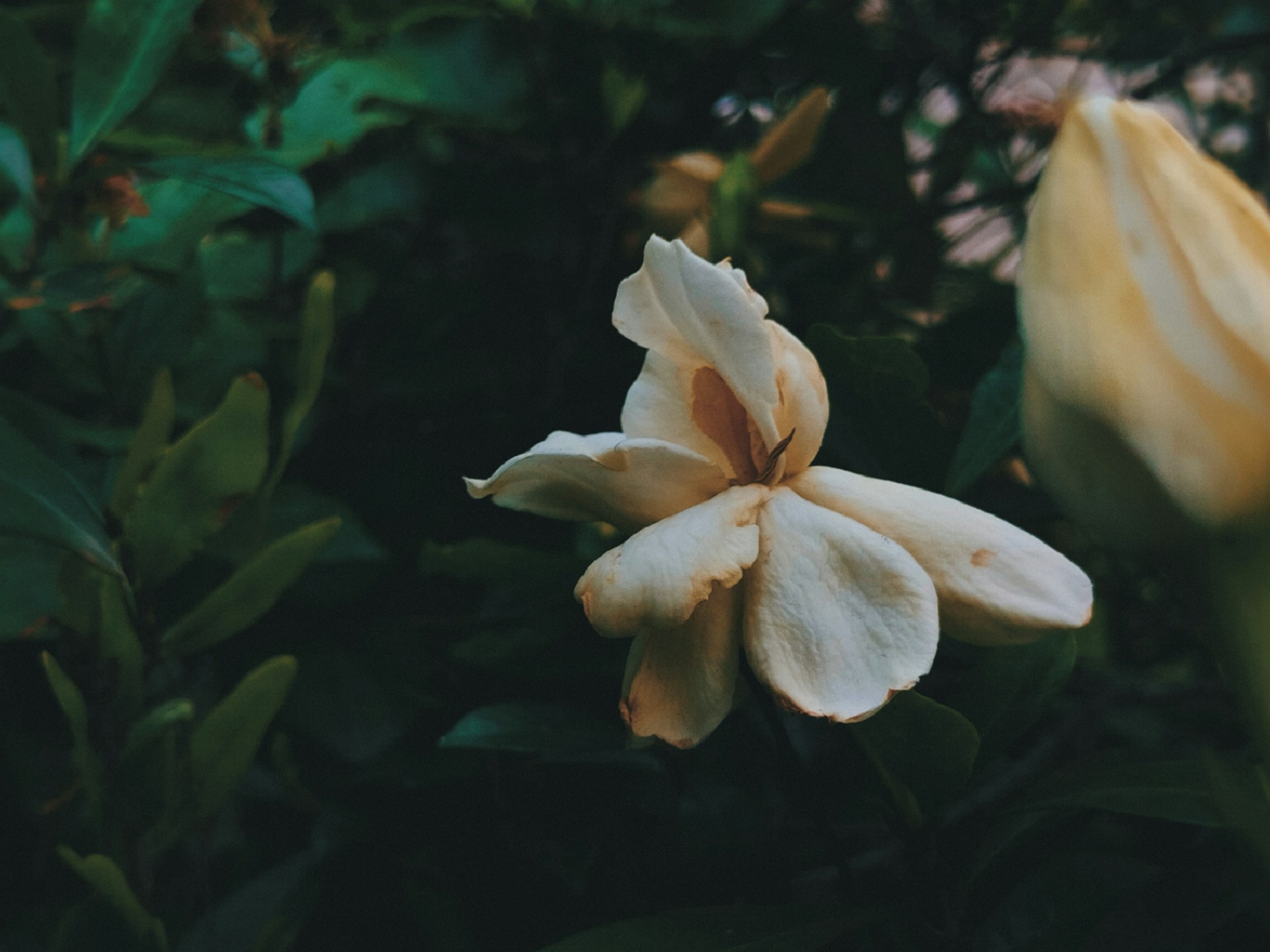
White flower (credit: pexels)
Although the kantil flower has a long history of traditional use, it is important to be aware that consuming it directly can carry certain risks and side effects. Here are some potential side effects and risks to consider:
- Allergic Reactions: Some individuals may experience allergic reactions to the kantil flower. Symptoms can range from mild, such as itching or skin rashes, to more severe, such as difficulty breathing or swelling of the face and throat.
- Digestive Disorders: Consuming large amounts of the kantil flower can lead to digestive issues such as nausea, vomiting, or diarrhea. This is especially risky if the flowers are consumed raw or not properly processed.
- Drug Interactions: The kantil flower may interact with certain types of medications, particularly those that affect the central nervous system or are used to treat mental disorders. These interactions can increase side effects of the medication or reduce its effectiveness.
- Sedative Effects: Some studies suggest that extracts of the kantil flower have mild sedative effects. Excessive consumption may lead to drowsiness or decreased alertness, which can be dangerous when driving or operating machinery.
- Contamination Risks: If the kantil flowers are not picked or stored properly, there is a risk of contamination by bacteria, fungi, or parasites that can cause infections or food poisoning.
- Effects on Pregnancy and Breastfeeding: There is not enough research to ensure the safety of consuming the kantil flower during pregnancy or breastfeeding. Therefore, pregnant or breastfeeding women should avoid consuming this flower.
- Overdose: Although rare, consuming very large amounts of the kantil flower can lead to overdose symptoms such as dizziness, confusion, or even hallucinations.
Considering these potential risks and side effects, it is highly recommended to be cautious when consuming the kantil flower. If you decide to use it, make sure to do so in small amounts and under the supervision of a healthcare professional or an experienced herbalist.
As a safer alternative, consider using products that contain extracts of the flower kantil that have undergone safety testing, such as essential oils for aromatherapy or dermatologically tested skincare products.
8. Scientific Research Related to Kantil Flower
Although the kantil flower has long been used in traditional medicine, modern scientific research on this plant is still relatively limited. However, several studies have been conducted to investigate the potential benefits and properties of the kantil flower. Here is a summary of some related scientific studies:
- Antioxidant Activity: A study published in the Journal of Ethnopharmacology (2010) showed that kantil flower extract has significant antioxidant activity. This research indicates the potential of the kantil flower in combating oxidative stress and preventing cell damage.
- Anti-inflammatory Effects: Research published in BMC Complementary and Alternative Medicine (2014) found that kantil flower extract has anti-inflammatory properties. This study suggests the potential use of the kantil flower in treating inflammatory conditions.
- Antimicrobial Activity: A study in the Journal of Applied Pharmaceutical Science (2012) revealed that kantil flower extract has antimicrobial activity against several types of pathogenic bacteria. These findings suggest the potential of the kantil flower in the development of natural antibacterial drugs.
- Neuroprotective Effects: Research published in the Journal of Natural Medicines (2015) showed that certain compounds in the kantil flower have neuroprotective effects. This opens up possibilities for the use of the kantil flower in treating neurological disorders.
- Anti-cancer Potential: Some preliminary studies, including one published in the Asian Pacific Journal of Cancer Prevention (2013), indicate that kantil flower extract has anti-cancer activity against several types of cancer cells in vitro. However, further research is needed to confirm these effects in in vivo models.
Although the results of this research are promising, it is important to note that most studies are still in the early stages and conducted on laboratory or animal models. Further research, including clinical trials in humans, is necessary to ensure the effectiveness and safety of using the frangipani flower in a medical context.
Additionally, many studies focus on extracts or specific compounds from the frangipani flower, rather than on the consumption of the whole flower. Therefore, the effects observed in studies may not directly correlate with traditional practices of consuming the frangipani flower directly.
The development of scientific research on the frangipani flower continues, and it is hoped that in the future there will be a more comprehensive understanding of the potential benefits and risks of using this plant in the context of modern health.
9. Myths vs Facts About Kantil Flower
The kantil flower has long been the subject of various myths and traditional beliefs. However, with the advancement of science, some of these myths have been compared to scientific facts. Here are some popular myths about the kantil flower along with their scientific facts:
- Myth: Eating kantil flowers can make someone youthful. Fact: There is no scientific evidence to support this claim. However, kantil flowers do contain antioxidants that can help fight free radicals that cause premature aging.
- Myth: Kantil flowers can be used to detect virginity. Fact: This is a myth that has no scientific basis whatsoever. Virginity cannot be detected through such methods.
- Myth: The aroma of kantil flowers always indicates the presence of supernatural beings. Fact: The aroma of kantil flowers is a result of natural chemical compounds in the flower, not a sign of the presence of supernatural entities.
- Myth: Kantil flowers have magical powers to attract fortune. Fact: There is no scientific evidence to support this claim. Financial success is more related to economic factors and personal effort.
- Myth: Consuming kantil flowers can cure all diseases. Fact: Although kantil flowers have some medicinal properties, there is no evidence that they can cure all types of diseases. Modern medical treatment is still necessary for many health conditions.
- Myth: Kantil flowers only grow in sacred places. Fact: Kantil flowers can grow in various suitable environments, not limited to locations considered sacred.
- Myth: Planting kantil flowers at home will invite misfortune. Fact: There is no scientific relationship between planting kantil flowers and good or bad luck. This flower is safe to plant as an ornamental plant.
It is important to understand that many myths surrounding the kantil flower are rooted in cultural traditions and beliefs that have developed over centuries. Although these myths may have cultural or symbolic value, they do not always align with modern scientific understanding.
In a modern context, we can appreciate the cultural and historical value of these myths while remaining critical and relying on scientific evidence in decision-making related to health and the use of kantil flowers.
10. FAQ About Eating Kantil Flower
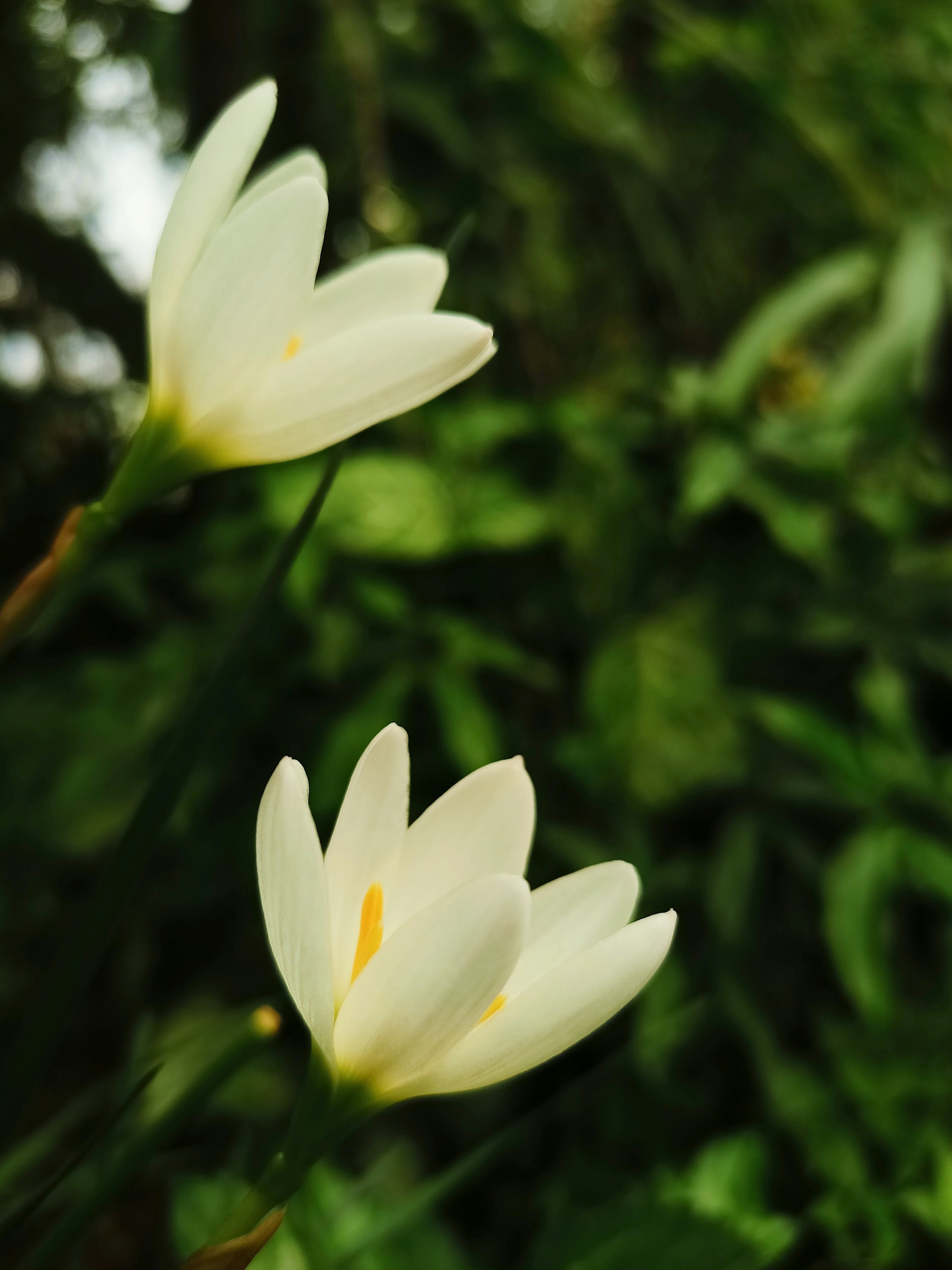
White flower (credit: pexels)
Here are some frequently asked questions about the consumption of kantil flowers along with their answers:
- Q: Is it safe to consume raw kantil flowers? A: Although there is a tradition of consuming raw kantil flowers in some rituals, it is not recommended to consume them regularly or in large quantities. Eating raw flowers can cause digestive issues and contamination risks.
- Q: What is the best way to consume kantil flowers? A: If you want to consume kantil flowers, a safer way is to mix them into herbal tea or use their extract in a processed and safety-tested form.
- Q: Are there any side effects from consuming kantil flowers? A: Some people may experience allergic reactions or digestive disturbances. Other side effects may include drowsiness or interactions with certain medications.
- Q: Can kantil flowers help with weight loss? A: There is no strong scientific evidence supporting the claim that kantil flowers can aid in weight loss. Healthy weight loss requires a balanced diet and regular exercise.
- Q: Can kantil flowers be used for cancer treatment? A: Although some early studies suggest anti-cancer potential from kantil flower extracts, there is not yet sufficient clinical evidence to support their use in cancer treatment. Cancer patients should always consult their doctor before using alternative treatments.
- Q: How much kantil flower is safe to consume? A: There is no established dose for consuming kantil flowers. Due to the lack of research on long-term safety, it is recommended to consume them in small amounts and not on a regular basis.
- Q: Can kantil flowers be used during pregnancy? A: Pregnant women should avoid consuming kantil flowers as there is not enough research on their safety during pregnancy. Always consult a doctor before using any herbal products during pregnancy.
- Q: How can you distinguish real kantil flowers from fake ones? A: Real kantil flowers have a distinctive and strong aroma. Its petals are pure white with a slight yellow tinge in the center. Make sure to buy from a trusted source and check the authenticity of the flower before using it.
- Q: Are there safer alternatives to obtain the benefits of the kantil flower? A: Safer alternatives include using kantil flower essential oil for aromatherapy or skincare products containing kantil flower extract that has been tested for safety.
- Q: Can the kantil flower be used to treat insomnia? A: Although the aroma of the kantil flower is considered calming, there is not yet strong scientific evidence supporting its use for treating insomnia. If you are experiencing sleep problems, it is best to consult a doctor for appropriate treatment.
11. The Role of Kantil Flower in Javanese Traditional Medicine
In the traditional Javanese medicinal system, the kantil flower plays a significant role and has been used for centuries for various healing purposes. The use of the kantil flower in traditional Javanese medicine reflects the holistic understanding of the Javanese people about health, where physical, mental, and spiritual aspects are considered interconnected.
Some uses of the kantil flower in traditional Javanese medicine include:
- Calming Medicine: The distinctive aroma of the kantil flower is believed to have a calming effect on the mind and body. In traditional practices, the kantil flower is often used as part of a potion to address stress, anxiety, and sleep disorders.
- Skincare: The kantil flower is used in various potions for skincare. The extract of this flower is believed to have anti-aging properties and can help brighten the skin. In some traditional recipes, the kantil flower is mixed with other natural ingredients to create face masks or scrubs.
- Fever Treatment: In traditional Javanese medicine, the kantil flower is often used as part of a potion to reduce fever. Typically, this flower is mixed with other ingredients such as pandan leaves or alang-alang roots.
- Addressing Digestive Issues: Some Javanese healers use the kantil flower in potions to address various digestive problems such as nausea, bloating, or diarrhea. This flower is believed to have properties that can soothe the digestive system.
- Postpartum Care: In Javanese tradition, the kantil flower is often used in the care of mothers after childbirth. This flower is considered to help restore energy and accelerate the healing process.
It is important to note that the use of kantil flowers in traditional Javanese medicine is not limited to direct consumption. Often, this flower is used in the form of complex herbal concoctions involving various other herbal ingredients. The process of making these concoctions usually involves certain rituals and prayers, reflecting the spiritual aspects of traditional Javanese medicine.
In a modern context, some aspects of the traditional use of kantil flowers have attracted the attention of researchers. Scientific studies are being conducted to investigate the pharmacological basis of these traditional claims. However, it is important to remember that many traditional uses have not yet been scientifically validated and still require further research to ensure their safety and effectiveness.
12. Cultivation of Kantil Flower
Cultivating kantil flowers is an important aspect of preserving this plant, both for ornamental purposes and to meet the demand for traditional and modern uses. Although kantil flowers have significant cultural value and potential medicinal properties, the cultivation process requires special attention and a deep understanding of the needs of this plant.
Here are some important aspects of kantil flower cultivation:
- Environmental Conditions: Kantil flowers grow optimally in tropical and subtropical areas. This plant prefers full sunlight to partial shade. The ideal temperature for kantil flower growth ranges from 20-30 degrees Celsius.
- Soil: Kantil flowers require nutrient-rich, loose soil with good drainage. Soil with a neutral to slightly acidic pH (6.0-7.0) is ideal for optimal growth.
- Watering: Although kantil flowers are quite drought-resistant once established, young plants require regular watering. Overwatering should be avoided as it can lead to root rot.
- Fertilization: Regular application of balanced fertilizers can help enhance growth and flower production. Organic fertilizers such as compost or well-aged manure are very good for kantil flowers.
- Pruning: Regular pruning is necessary to maintain the shape of the plant and stimulate new growth. Pruning also helps prevent diseases by improving air circulation around the plants.
- Propagation: The kantil flower can be propagated through seeds, cuttings, or grafting. Propagation through cuttings is the most commonly used method as it is relatively easy and produces plants that are identical to the parent.
- Pest and Disease Control: The kantil flower is relatively resistant to pests and diseases, but it remains vulnerable to some issues such as aphids, thrips, and fungal diseases. Regular monitoring and preventive measures are very important.
In the context of commercial cultivation, some challenges faced include:
- The time required for the plants to reach productive age (usually 3-5 years)
- The need for a sufficiently large area considering the size of the kantil tree, which can reach heights of up to 30 meters
- Fluctuations in market demand, especially for use in the perfume and cosmetics industries
The cultivation of the kantil flower also has important conservation aspects. With the increasing demand for kantil flowers for various purposes, sustainable cultivation can help reduce pressure on the wild populations of this plant. This is especially important considering that the natural habitat of the kantil flower in some areas has experienced decline due to deforestation and land-use changes.
13. Kantil Flower in Art and Literature
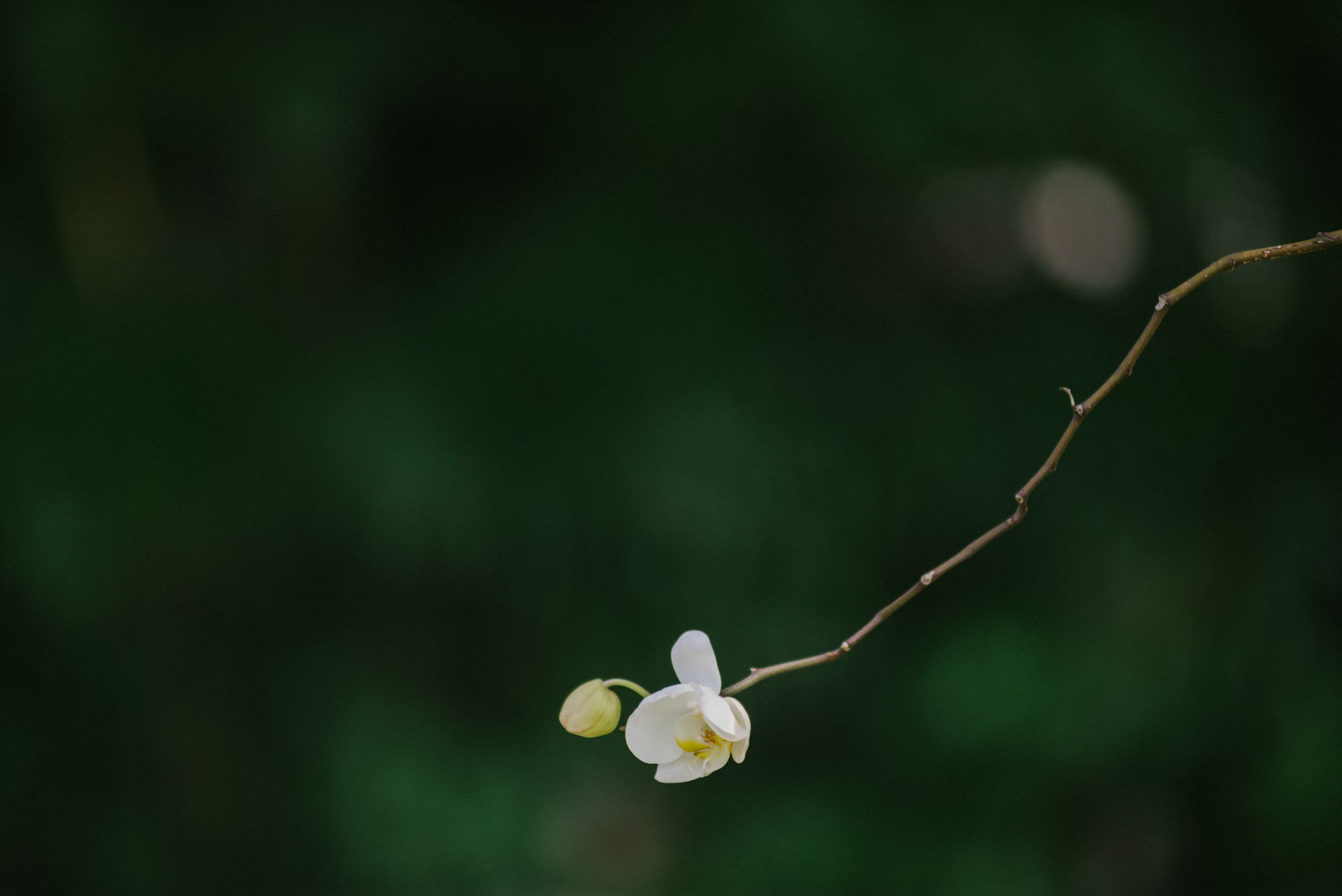
White flower (credit: pexels)
The kantil flower not only has significance in the context of culture and traditional medicine but has also become a rich source of inspiration in the world of Indonesian art and literature, particularly in Javanese tradition. The beauty, aroma, and symbolic meaning of the kantil flower have been immortalized in various forms of artistic expression for centuries.
In traditional Javanese visual arts, the kantil flower often appears as a motif in batik, wood carvings, and paintings. The kantil flower motif in batik, for example, is often used in fabrics worn for traditional ceremonies or weddings. The pure white petals of the kantil flower are often interpreted as symbols of purity and grace.
In performing arts, the kantil flower plays an important role in several traditional Javanese dances. For instance, in the Bedhaya Ketawang dance, which is a sacred dance at the Surakarta Palace, the kantil flower is used as part of the offerings and also as decorations for the dancers. The aroma of the kantil flower that spreads during the performance is considered to add a spiritual dimension to the dance.
In Javanese literature, the kantil flower often appears as a metaphor or symbol in poetry and prose. Some examples of the use of the kantil flower in literary works include:
- As a symbol of eternal and pure love
- A metaphor for graceful and simple beauty
- A representation of longing or memories of someone who has passed
- A symbol of transition between the physical and spiritual worlds
One famous example of the use of the kantil flower in modern Indonesian literature is in the poem "Bunga" by Chairil Anwar. Although not explicitly mentioning the kantil flower, many literary critics interpret that the flower referred to in the poem is the kantil flower, considering the cultural context and symbolism associated with this flower.
In contemporary art, several Indonesian artists have explored the theme of the kantil flower in their works, whether in the form of paintings, installations, or digital art. This modern interpretation often combines the traditional symbolism of the kantil flower with contemporary issues such as cultural identity, modern spirituality, or social critique.
It is important to note that the representation of the kantil flower in art and literature is not always literal. Often, references to this flower are symbolic or allegorical, reflecting the complexity of cultural meanings associated with it. For example, the scent of the kantil flower may be used as a metaphor for unforgettable memories, or its white petals may symbolize the purity of the soul.
14. Kantil Flower in the Perfume and Cosmetics Industry
In addition to its cultural value, the kantil flower also plays an important role in the perfume and cosmetics industry. The distinctive aroma of the kantil flower, which is fragrant and exotic, has made it a sought-after ingredient in the production of high-end perfumes and skincare products. The use of kantil flowers in this industry is not limited to the local Indonesian market but has also penetrated international markets.
In the perfume industry, the essential oil of the kantil flower is known as "champaca absolute." The extraction process of this essential oil is quite complex and requires special expertise, making it one of the most expensive perfume materials in the world. The aroma of the kantil flower in perfumes is often described as a blend of magnolia, jasmine, and vanilla, with a unique exotic touch.
Some characteristics of the kantil flower that make it popular in the perfume industry include:
- A strong and long-lasting aroma
- The complexity of the scent that adds depth to the perfume composition
- The ability to blend well with various other fragrance notes
- Association with luxury and exoticism
In the cosmetics industry, kantil flower extract is often used in various skincare and haircare products. Some claimed benefits of using kantil flower extract in cosmetic products include:
- Anti-aging: The antioxidant content in kantil flowers is believed to help combat signs of skin aging.
- Skin Brightening: Some products claim that kantil flower extract can help brighten the skin and disguise dark spots.
- Natural Moisturizer: The hydrating properties of kantil flowers make them popular in skin and hair moisturizing products.
- Aromatherapy: The aroma of kantil flowers in personal care products is considered to have calming effects and reduce stress.
However, the use of kantil flowers in the perfume and cosmetics industry also faces several challenges:
- Scarcity and Price: The complicated extraction process and the need for large quantities of fresh flowers make the price of kantil flower essential oil very expensive.
- Sustainability: The increasing demand has raised concerns about the sustainability of this resource. Some companies are starting to switch to more sustainable cultivation methods or seek synthetic alternatives.
- Standardization: Variations in quality and composition of kantil flower essential oil from different sources can pose challenges in ensuring product consistency.
- Regulation: The use of natural ingredients in cosmetics and perfumes must comply with various safety and health regulations in different countries.
Despite facing these challenges, the popularity of kantil flowers in the perfume and cosmetics industry continues to grow. Innovation in extraction techniques and product formulation continues to be carried out to maximize the potential of this flower while maintaining its sustainability.
15. Kantil Flower in Ecology and Conservation
The kantil flower, as part of the natural ecosystem in several Southeast Asian regions, plays an important role in the local ecology and has become the subject of conservation efforts. Understanding the ecological role of the kantil flower and efforts to preserve it is increasingly important as threats to its natural habitat grow.
In the context of ecology, the kantil flower serves several important functions:
- Pollination: The kantil flower attracts various types of pollinating insects, including bees and butterflies. This pollination process is not only crucial for the reproduction of the kantil plant itself but also contributes to the overall balance of the ecosystem.
- Fauna Habitat: The large and lush kantil trees provide habitat for various species of birds and insects. Some bird species utilize these trees for nesting or foraging.
- Soil Stabilization: The deep and strong root system of the kantil tree helps stabilize the soil, especially in areas prone to erosion.
- Nutrient Cycling: The fallen leaves and flowers of the kantil contribute to nutrient cycling in the forest ecosystem, enriching the soil as they decompose.
However, natural populations of the kantil flower face several serious threats:
- Deforestation: Land clearing for agriculture and development has significantly reduced the natural habitat of the kantil flower.
- Overexploitation: High demand for kantil flowers for various purposes has led to overharvesting from the wild.
- Climate Change: Changes in weather patterns and temperatures can affect the growth and reproduction of the kantil flower in its natural habitat.
- Habitat Fragmentation: Infrastructure development that cuts through natural habitats can isolate kantil populations, reducing genetic diversity.
In response to these threats, various conservation efforts have been undertaken:
- Habitat Protection: Several countries have established special protection areas to preserve the natural habitat of the kantil flower.
- Sustainable Cultivation: Sustainable cultivation programs have been developed to reduce pressure on wild populations while meeting market demand.
- Genetic Research: Genetic studies are conducted to understand the diversity of kantil populations and develop effective conservation strategies.
- Community Education: Educational programs are implemented to raise public awareness about the importance of preserving the kantil flower and its habitat.
- Seed Banks: Initiatives to store kantil seeds in seed banks are undertaken as a long-term preservation effort.
Conservation efforts for the kantil flower also involve collaboration between various parties, including governments, research institutions, conservation organizations, and local communities. This integrated approach aims to ensure the sustainability of the kantil flower not only as a valuable natural resource but also as an integral part of the cultural and ecological heritage in its region of origin.
16. Conclusion
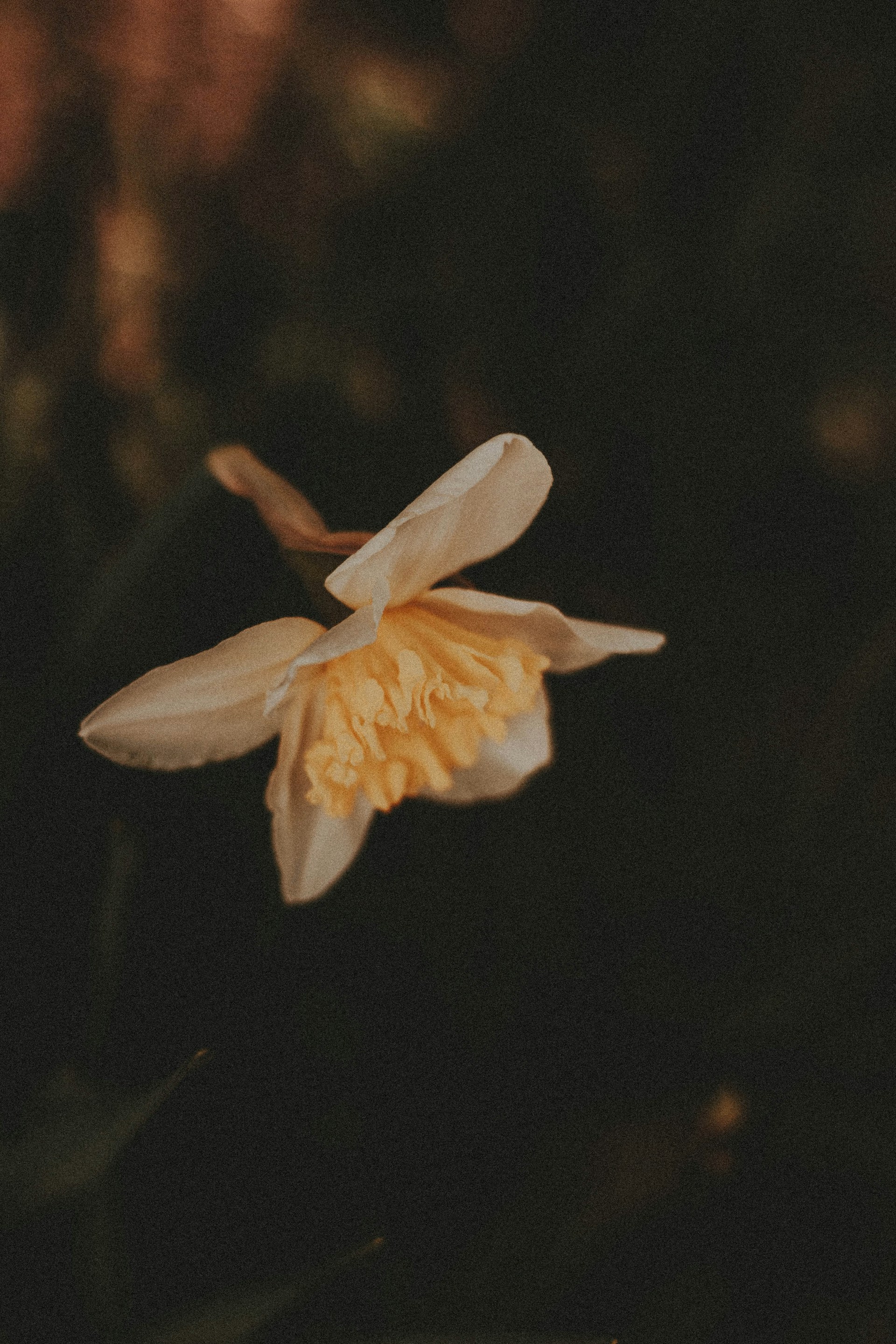
White flower (credit: pexels)
Kantil flower, with all its myths, benefits, and cultural values, is a plant that holds a unique position in Indonesian culture, especially in Java. From its use in traditional rituals to its role in modern industry, the kantil flower continues to be an interesting subject to explore and study.
Although many myths surrounding the kantil flower have not been scientifically proven, modern research is beginning to uncover the potential health benefits of this plant. However, it is important to be cautious and not consume the kantil flower indiscriminately without expert guidance.
In the context of ecology and conservation, the kantil flower faces serious challenges due to environmental changes and over-exploitation. Sustainable conservation efforts are necessary to ensure the survival of this species in the wild.
Ultimately, the kantil flower remains a strong symbol in Javanese culture, bridging the past with the present, and continues to inspire in various aspects of life, from art to science. Understanding and appreciating the complexity of the kantil flower, both from traditional and modern perspectives, is an important step in preserving this valuable cultural and natural heritage.
Discover more interesting reviews at kapanlagi.com. If not now, when?
(kpl/psp)
Disclaimer: This translation from Bahasa Indonesia to English has been generated by Artificial Intelligence.















